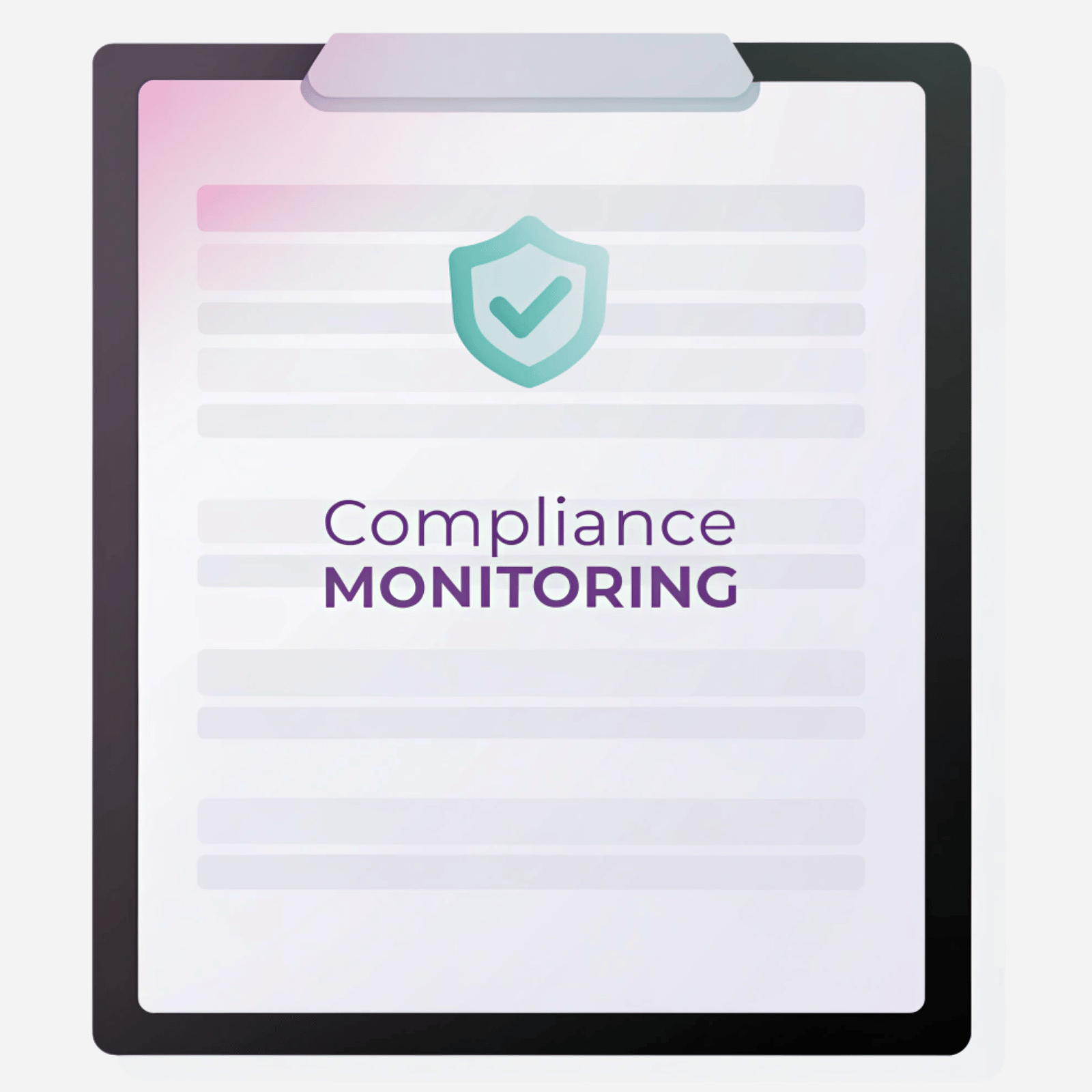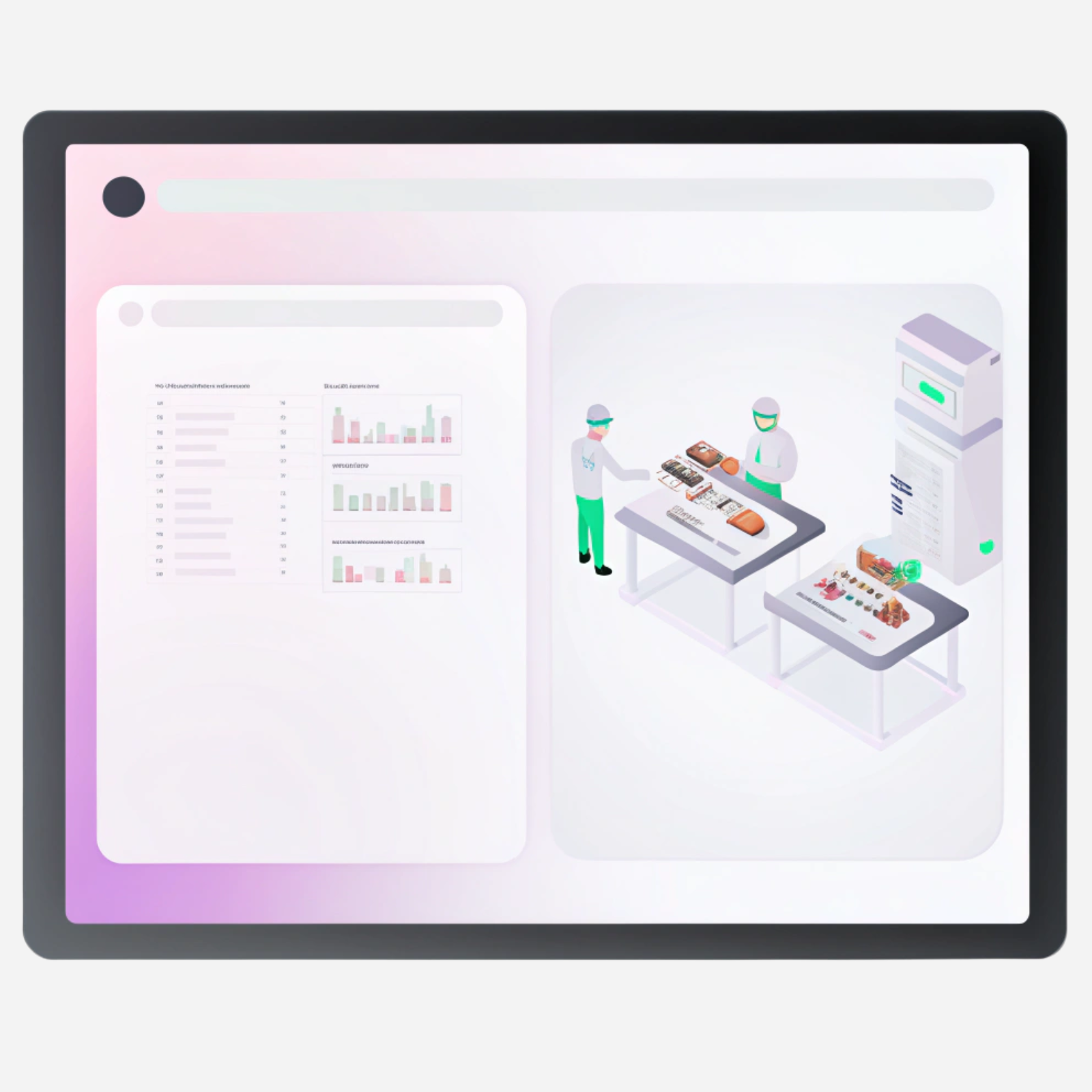
Introduction
Сompliance is an untied part of any business, and if you're still relying on traditional, manual compliance methods, the numbers for 2025 are a clear wake-up call.
The cost of non-compliance is staggering, averaging nearly $15 million per company: a figure that is almost three times higher than the cost of maintaining a robust compliance program.
Meanwhile, the regulatory landscape is only getting more complex, with over 85% of companies reporting a significant increase in regulatory complexity in recent years. This rising tide of risk has a direct impact on growth, as 77% of businesses report being negatively impacted by compliance complexity.
But there is a clear path forward. The most successful businesses are turning to technology to get ahead. With 82% of businesses planning to increase investment in technology to automate and optimize their compliance activities, the question is no longer whether you will adopt a modern solution, but which one.
This article is your essential guide to the best compliance monitoring tools of 2025. We've researched to bring you a curated list of platforms that are leading the charge, helping businesses transform compliance from a burdensome obligation into a powerful tool for risk mitigation, efficiency, and sustained growth.
What is Compliance Monitoring Tool
Let's demystify what a compliance monitoring tool actually is.
For many years, managing compliance has been a manual, painstaking process. It has been a series of disconnected tasks involving binders of regulations, detailed spreadsheets, and endless checklists. This approach is similar to managing a company's financial health using only a ledger and a calculator. It's inefficient and prone to human error.
A compliance monitoring tool is the modern solution to this challenge. It’s a sophisticated software system designed to automate the process of tracking, analyzing, and reporting on your business’s adherence to rules and standards. Instead of reacting to issues after an audit, these tools provide continuous, real-time visibility into your compliance status.
Think of it as the difference between traditional auditing and continuous auditing. In the past, an audit was a snapshot in time: a one-time review that told you what was wrong after the fact. A modern compliance monitoring tool is like a constant, real-time dashboard. It continuously scans your operational data and processes against a library of regulations, instantly flagging any deviation or gap.
For example, in the pharmaceutical industry, a compliance monitoring system can be configured to track data directly from sources such as the FDA database or EMA regulations. When a new update or guidance is published, say, a change in requirements under FDA 21 CFR Part 11, the system can automatically parse and index the document. The admin can then enable monitoring for that regulation, define relevant keywords (like “electronic records” or “batch validation”), and link it to specific production sites or accounts.
Such compliance monitoring tools allow compliance officers to react to regulatory changes proactively, long before a formal audit or inspection occurs.
Best Compliance Monitoring Tools in 2025
The compliance landscape in 2025 is no longer about a single, one-size-fits-all solution.
The best compliance monitoring tools are those that specialize in a specific area, integrate with your existing tech stack, and provide continuous, real-time insights. The following tools represent the top performers in the market, each with unique strengths tailored to different business needs.
#1 IONI
IONI stands out as an AI-powered compliance platform built specifically for compliance and regulatory teams. It uses intelligent AI agents to automate time-consuming tasks like research, regulatory tracking, and risk monitoring, which is particularly crucial for businesses in industries like food production and pharmaceuticals.
Key Features:
- Real-Time Regulatory Monitoring: IONI employs AI agents to continuously track and analyze regulatory changes across various jurisdictions and industries. These agents provide real-time alerts and updates, ensuring that businesses are promptly informed of any changes that may impact their compliance status.
- Automated Impact Assessment: The platform uses AI to assess the impact of regulatory changes on existing policies and procedures. By evaluating which specific clauses are affected, IONI helps prioritize compliance efforts and ensures timely updates to internal processes.
- Gap Analysis and Policy Drafting: IONI automates compliance gap analysis by comparing current policies against the latest regulations. It identifies missing clauses, misalignments, and incomplete terms, providing clear, citation-backed insights.
- Regulatory Intelligence Dashboard: The platform features a centralized dashboard that consolidates regulatory updates, compliance status, and risk assessments. This dashboard provides compliance teams with a comprehensive view of their regulatory landscape.
- HACCP Builder: Designed for food manufacturers and processors, IONI’s HACCP Builder simplifies the creation, management, and validation of HACCP plans. Using AI, it automates hazard identification, critical control point determination, and documentation workflows, ensuring full alignment with Codex Alimentarius, FDA, and EU food safety standards.
How IONI Compliance Monitoring Works:
- Start by setting up all your sources within the dashboard.
- Manage and interact with sources on a dedicated “Sources” screen to monitor activity.
- The system scans incoming documents and regulations to detect new updates relevant to your business.
- It automatically checks whether each regulation applies to your company.
- Applicable regulations are marked, and corresponding compliance requirements are generated.
- Non-applicable regulations can be added to your library for reference later.
- Review PDFs and basic document details; full analysis is available for applicable regulations.
- Provide a company description and profile information to enable accurate monitoring.
- Admins can manually set up sources and monitoring for new accounts if needed.
- Real-time alerts notify users of new regulations, deviations, or required actions.
- Users can adjust keywords to refine monitoring and search results according to their compliance needs.
The system is scalable, allowing integration with additional regulatory sources and the creation of monitoring for new sources over time.
Who Is It For:
IONI is ideal for compliance and regulatory affairs managers, quality assurance (QA), quality control (QC) teams, R&D, and operational officers in industries that face constant regulatory updates.
It is particularly valuable for businesses that need continuous monitoring across multiple jurisdictions, want to reduce manual tracking, and prefer a proactive approach to compliance management.
#2 Scrut
Scrut is a modern compliance monitoring and risk management platform designed to simplify how companies manage security, audits, and compliance frameworks. It provides end-to-end visibility into compliance readiness, helping teams replace manual tracking with real-time, automated oversight.
Key Features:
- Compliance Management: Scrut offers 75+ policies mapped to 1,400+ controls and allows importing existing documents. Scrut Monitor automatically collects evidence for frameworks like ISO 27001, SOC 2, and GDPR, reducing manual work and providing a clear view of compliance gaps.
- Risk Management: The platform scans infrastructure, applications, vendors, and employees to identify risks. Teams can use a preloaded risk library or create a custom risk register, set alerts, and monitor risk lifecycle with insights into vendor compliance.
- Audit Management: Scrut organizes audits by framework and control, tracks corrective actions, and allows auditors direct platform access - eliminating emails and file sharing for a smoother audit process.
- Task & Workflow Automation: Automated workflows let teams assign, track, and manage compliance tasks. Integration with task management tools ensures accountability and visibility across all activities.
Who Is It For:
Scrut is ideal for medium to large businesses seeking to streamline compliance and risk management. It suits IT, security, and compliance teams handling multiple frameworks, audits, or vendor oversight, especially those looking to reduce manual work and improve efficiency.
#3 AuditBoard
AuditBoard is a comprehensive GRC platform designed to simplify and automate compliance processes for enterprises. It offers a unified approach to managing audits, risks, and compliance across various frameworks.
Key Features:
- Multi-Framework Compliance Management: AuditBoard supports a wide range of compliance standards, including SOC 2, ISO, NIST, PCI, and more. It allows companies to manage multiple frameworks within a single platform, streamlining the compliance process.
- Automated Control Testing: The platform offers out-of-the-box automated controls and customizable workflows to simplify control testing efforts, enhancing efficiency and accuracy.
- Regulatory Change Management: With AI-powered insights, AuditBoard helps companies stay updated with changing regulations, providing proactive alerts and impact assessments to ensure continuous compliance.
- Integrated Risk Management: AuditBoard enables to visualization and addressing of risks across operations, integrating risk data with compliance and audit activities for a comprehensive risk management approach.
- Audit Lifecycle Management: The platform facilitates the entire audit lifecycle, from planning to remediation, with features like audit trails, templates, and real-time collaboration tools.
Who Is It For:
AuditBoard is ideal for large enterprises and companies in regulated industries such as finance, healthcare, and technology. It's particularly beneficial for compliance, audit, and risk management teams seeking to streamline their processes, ensure continuous compliance, and enhance visibility into their risk landscape.
#4 Drata
Drata is an AI-driven Governance, Risk, and Compliance platform designed to automate and streamline compliance processes. It continuously monitors security controls, collects audit-ready evidence, and provides real-time visibility into compliance status across various frameworks.
Key Features:
- Continuous Control Monitoring: Drata automates the monitoring of security controls, ensuring continuous compliance and reducing the need for manual checks.
- Automated Evidence Collection: The platform integrates with over 200 applications to automatically collect evidence required for audits, saving time and reducing errors.
- Customizable Frameworks: Users can build and manage custom compliance frameworks tailored to their specific business needs, including mapping controls and requirements.
- AI-Driven Risk Management: Drata utilizes AI to assess and manage risks, providing predictive insights and automated treatment plans to address potential issues proactively.
- Real-Time Compliance Dashboard: The platform offers a centralized dashboard that provides real-time visibility into compliance status, control effectiveness, and audit readiness.
Who Is It For:
Drata is ideal for technology-driven businesses, especially those in regulated industries such as SaaS, healthcare, and finance. It's particularly beneficial for compliance, security, and IT teams seeking to automate compliance processes, reduce manual workloads, and maintain continuous audit readiness.
#5 Sprinto
Sprinto is a security compliance automation platform that helps cloud-first tech companies maintain ongoing compliance and simplify audit processes.
Key Features:
- Continuous Control Monitoring & Evidence Collection: Sprinto integrates with 200+ apps and services (cloud infra, HR, source control, etc.) to automatically map, monitor, and gather evidence for compliance controls. For controls that can’t be fully automated, it provides workflow-based/manual checks with guidance.
- Framework Support & Control Mapping: Supports many frameworks out-of-the-box (SOC 2, ISO 27001, GDPR, HIPAA, PCI-DSS, etc.) while also allowing custom frameworks or controls.
- Real-Time Dashboard & Alerts: Provides a central dashboard showing control health, tasks, risk posture, and compliance readiness. Smart real-time alerts and notification rules help you catch failing or overdue controls, misconfigurations, or drift quickly.
- Audit & Task Management: Offers tools for audit preparation: a centralized workspace for audit-ready evidence, assigning ownership of tasks, tracking their status, and ensuring compliance is always audit-ready.
Who Is It For:
- Tech companies (startups and scale-ups) that are cloud-native or heavily cloud-dependent and need scalable, automated compliance.
- Teams that don’t want compliance to be a point-in-time burden but a continuous process, eliminating “scramble mode” before audits.
- Organisations that manage multiple frameworks or standards, or need to show compliance to customers, regulators, or partners.
#6 Secureframe
Secureframe helps businesses automate their compliance, continuously monitor security posture, and maintain certifications with minimal manual effort.
Key Features:
- Continuous Monitoring & Automated Evidence Collection: Secureframe connects with 100+ integrations to auto-collect evidence for compliance controls. It runs ongoing tests and gives real-time alerts when things diverge from expected settings.
- Risk-based Monitoring: Secureframe tracks risks through a risk register, vulnerability scans, and threat identification across assets. Tests are continuously updated.
- Framework Support + Customization: Supports a wide variety of compliance frameworks (SOC 2, ISO 27001, HIPAA, etc.) as well as custom frameworks, mapping controls/tests accordingly.
- Dashboards & Alerts: Offers dashboards showing control health, compliance status, vulnerabilities, compliance gaps, etc. - with actionable alerts and notifications to keep teams ahead of issues.
- Vendor & Personnel Management: Tracks vendor risk, scope, reviews; also handles employee onboarding/offboarding, policy/training compliance.
- Remediation Guidance & Readiness Reports: Provides tools and guidance to fix failing controls, plus reports to prepare for audits or show compliance readiness.
Who It’s For:
- Startups and mid-sized tech companies that need to scale their compliance without building huge audit or security teams.
- Companies that want continuous, risk-based compliance monitoring rather than point-in-time audits.
- Teams that use a lot of cloud services, identity tools, HR systems, etc., and want wide integrations to avoid manual evidence gathering.
Conclusion
For compliance teams in 2025, choosing the right compliance monitoring tools is more than just a matter of convenience - it’s a strategic necessity. Modern regulatory environments demand real-time visibility, automated risk detection, and seamless reporting capabilities.
The best tools empower compliance professionals to stay audit-ready at all times, identify emerging risks before they escalate, and maintain continuous alignment with evolving laws, frameworks, and internal policies.
By integrating automation, analytics, and centralized dashboards, these platforms allow compliance teams to shift from reactive oversight to proactive governance, ensuring that compliance becomes an ongoing, data-driven process rather than a periodic checklist.
Here’s a brief overview of the platforms discussed and how they support compliance monitoring:
- IONI – Focused on regulated industries such as food safety and life sciences, IONI uses AI smartly to monitor regulatory changes in real time, perform gap analysis, and provide actionable compliance insights.
- Scrut – Ideal for medium to large businesses, Scrut automates evidence collection, tracks compliance progress, and provides risk insights across infrastructure, applications, and vendors. It’s perfect for teams managing multiple frameworks like ISO 27001, SOC 2, and GDPR.
- AuditBoard – Designed for large enterprises, AuditBoard streamlines audits, manages multiple compliance frameworks, and provides integrated risk tracking. Its main strength lies in supporting audit lifecycle management and continuous compliance visibility.
- Drata – Focused on technology-driven businesses, Drata automates security controls monitoring, evidence collection, and risk assessments. It helps maintain continuous compliance with frameworks like SOC 2, ISO 27001, and HIPAA, reducing manual effort and preparation time.
- Sprinto – Tailored for cloud-native tech companies, Sprinto provides continuous control monitoring, real-time dashboards, and workflow-based audit preparation.
- Secureframe – Best suited for startups and mid-sized companies, Secureframe offers risk-based monitoring, extensive integrations, and automated evidence collection.
Each platform offers unique strengths depending on organizational size, industry, and compliance needs. Selecting the right tool ensures proactive compliance, reduced manual workload, and a stronger, more auditable risk management framework.
FAQ
Can compliance monitoring tools automatically detect gaps or risks in existing policies?
Yes. Modern compliance monitoring tools analyze your existing policies against regulatory frameworks to identify gaps, misalignments, or missing clauses. Platforms, like IONI, go further by providing AI-driven insights that highlight high-risk areas and suggest corrective actions, helping teams proactively address compliance weaknesses.
How do compliance monitoring tools handle regulatory changes across different regions?
These tools continuously monitor regulatory updates from multiple jurisdictions. They track changes in laws and standards, assess which areas of your policies are affected, and generate alerts or reports. This ensures businesses remain compliant with local, national, and international regulations without manually researching updates.
Does IONI offer AI-driven alerts for new regulatory changes?
Yes. IONI uses AI agents to monitor global regulatory sources in real time. It sends automated alerts when relevant changes occur and provides context, citations, and recommendations, enabling compliance teams to react quickly and update internal policies efficiently.
Can compliance monitoring tools provide recommendations or automated policy updates?
Many modern tools offer this functionality. Platforms like IONI can suggest policy edits or generate AI-assisted drafts based on regulatory changes and gap analyses. This reduces manual effort and ensures that policies remain aligned with the latest standards.
What is the cost range of compliance monitoring tools for startups versus enterprises?
Pricing varies based on features, integrations, and company size. Startups can expect entry-level tools to range from $500 to $2,500 per year, while mid-sized and enterprise organizations often invest $10,000 to $100,000+ annually for platforms with advanced monitoring, multi-framework support, and AI-driven capabilities. Many providers offer tiered pricing depending on compliance needs and team size.









